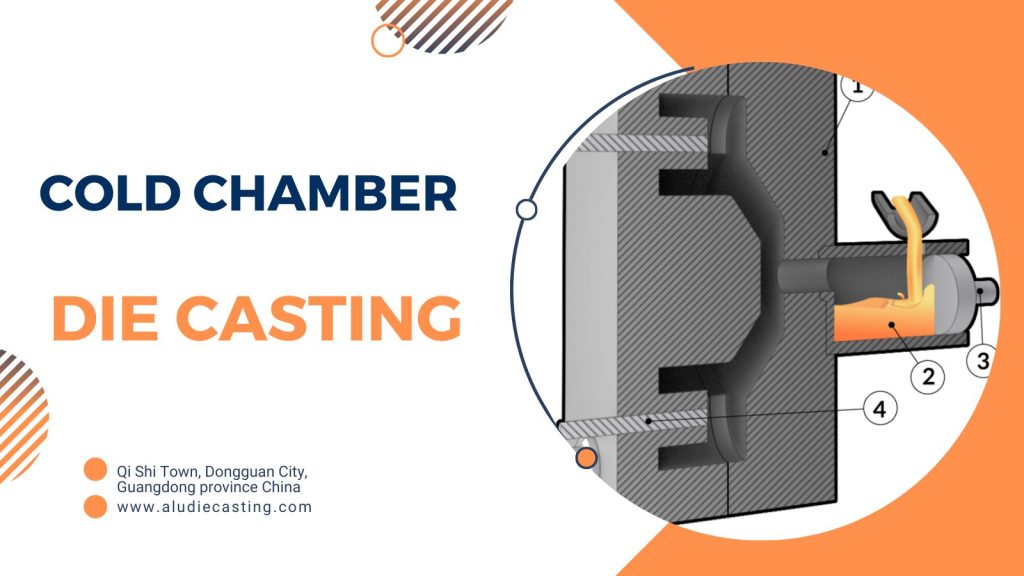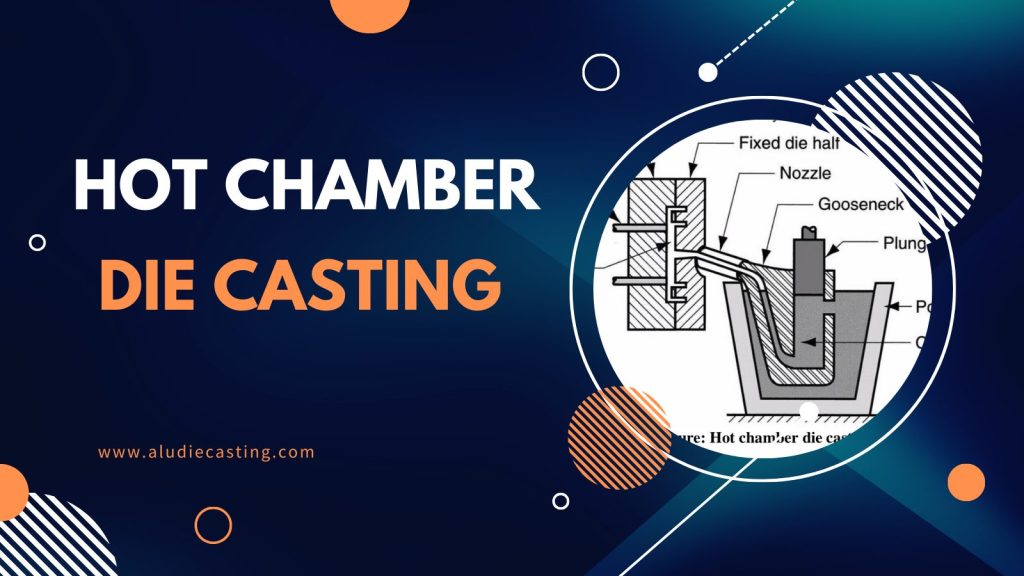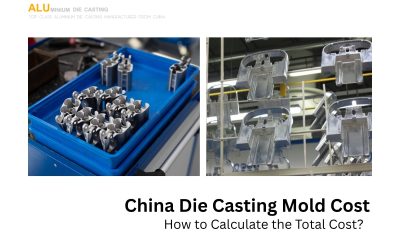In the manufacturing industry, die-casting accounts for 50% of all metal casting applications, emphasizing its significance in cold and hot chamber die-casting. These are the two primary techniques utilized, each possessing distinctive properties.
Cold chamber die-casting, with its unique ability to enhance control over metal properties, is particularly well-suited for materials such as aluminum. Conversely, hot chamber die-casting is a widely adopted method recognized for its rapidity and efficiency, making it particularly suitable for high-volume production.
This article demonstrates an understanding of both processes, which is essential for selecting the right method for specific applications and optimizing production efficiency.
Understanding Die-casting
Die casting is the method of producing metal components in which molten material is poured or forced into the mold cavity under extreme pressure. It can create complex-shaped metals with precisions and smooth finishes. Because of its effectiveness and capacity for creating intricate shapes, die casting is widely used in various industries.
Die Casting Process
Die casting manufacturing starts by injecting molten metal alloys into a die or mold. Mold design and manufacturing are key components of the die-casting process. The mold cavity is produced by two hardened/tempered steel or cast-iron dies machined to match the part’s net shape.
Pressure die casting involves injecting molten metal into the die cavity at high pressures and speeds, whereas low-pressure die-casting molds and gravity die-casting molds are filled at a much slower pace.
Advantages of Die-Casting
High Precision
This process can produce elements with excellent dimensional accuracy and smooth finishes, which are essential for quality and consistency.
Short Production Time
Due to its quick cycle times, it enhances overall productivity, making it ideal for mass-producing parts.
Extended Tool Life
Durable mods and furnace locations are critical elements of die casting where the material is melted, ensuring the metal remains at the optimal melting temperature for injection. That contributes to reduced long-term costs and increased manufacturing efficiency.
Material Versatility
Several materials with their own unique features can be cast via this process, like aluminum die-casting. It is lightweight and its corrosion-resistant features make it suitable for various applications. For instance, in automotive applications, both strength and precision are critical.
Surface Quality
Die-casting manufacturing provides a smooth surface finish that often requires minimal post-processing, reducing additional costs.
Dimensional Stability
This process ensures the parts maintain their dimensions over time for perfect fitting and assembly.
Disadvantages of Die-Casting
High Initial Setup Cost
The cost of die-casting equipment and molds is substantial, making it less economical for small businesses or custom projects.
Safety Concerns
Molten metals must be handled with stringent safety measures, including protective equipment and proper training, to prevent accidental injuries.
Potential Defects
It often causes issues like porosity and incomplete fills that can affect the structural integrity of the final parts. Therefore, additional quality control measures like inspections and machining are necessary.
Understanding Cold Chamber Die Casting
In the cold chamber die casting process, the corrosion problem is addressed by separating the melting pot from the injector components. The metal is transferred to the shot sleeve with a ladle, either manually or automatically.
The injection piston pushes the metal into the die in a single operation. This minimizes the contact time between the hot metal and the injector components, ultimately extending their operating life.
The cold chamber process allows for the casting of lower-melting-viable point alloys.
However, for metals like zinc and magnesium, the hot chamber process is generally more economically viable, despite the advantages of the cold chamber process.
Key Characteristics
Molten metal is injected into a chamber and poured into the mold under high pressure in a cold chamber casting. This manufacturing process offers better control over melting temperatures and is perfect for casting materials incompatible with hot chamber die casting.
Separating the furnace from the injection system prevents corrosion and allows rust resistance to extend the life of machine tools.
Advantages of Cold Chamber Die-Casting
Material Flexibility
Cold chamber die casting requires a lower temperature to melt the material compared to hot chamber casting, making it ideal for materials like aluminum and copper with low melting points.
Durability
It can effectively produce large volumes with durability features and excellent mechanical properties.
Precision
Cold die casting has the ability to create complicated parts with tight tolerances. This approach is extensively utilized in the automotive industry, medicine, and other industries where high precision is necessary.
Reduced Corrosion
Melting furnace separation helps the injecting system reduce the risk of corrosion, leading to longer-lasting equipment.
Versatility
It meets the performance requirements of various applications and allows for the use of multiple metal alloys.
Disadvantages of Cold Chamber Die Casting
Slower Cycle Times
The process of transferring molten metal from the furnace to the chamber increases production costs and reduces overall efficiency.
Higher Operating Costs
The separate melting and injection system requirements lead to higher initial setup and operating costs.
Limited to Specific Alloys
While versatile, this casting method is not suitable for materials with very low melting temperatures, which can be easily corroded.
Potential for Heat Loss
It requires precise temperature control to ensure consistent casting quality and avoid heat loss while transferring molten metal from the furnace to the chamber.
Understanding Hot Chamber Die Casting
The hot chamber machine’s injection mechanism is immersed in molten metal. The molten metal fills the cylinder when the piston rises, and the port opens. The molten metal is then forced into the die cavity and held under pressure until it solidifies.
Only one-half of the die contains the casting on the ejector side. The ejector pins pull the component out of the die as the plunger uncovers the filling hole for refilling the gooseneck.
Key Characteristics
The furnace is connected to the casting machine, which allows the molten material to be directly injected into the mold.
This processing works efficiently with metals with lower melting points, produces large volumes rapidly, and maintains equipment integrity. Because of its compatibility with the process, it is commonly utilized for zinc die casting.
Advantages of Hot Chamber Die Casting
Faster Cycle Times
By integrating the furnace and injection system, the molten metal is efficiently transferred at a rapid pace. This streamlined process increases production speed and enhances overall efficiency.
Longer Die Life
It helps reduce maintenance costs, wear and tear on dies, and their lifespan due to the lower temperatures of the molten metal.
A wider Range of Applicable Metals
This process offers flexibility for different applications and industries by accommodating a variety of metals, including magnesium and zinc alloys.
Improved Surface Finish
It creates parts with an improved surface finish that often do not require the need for additional finishing processes.
Simplified Process Control
The close connection between the furnace and the injection system helps maintain a constant temperature, leading to more uniform part production.
Disadvantages of Hot Chamber Die Casting
Limited to Lower Melting Point Metals
The hot chamber die casting process is limited to lower melting points for metals, restricting its use for materials like aluminum and copper that require high temperatures.
Potentially Lower Part Density
The components produced by hot chamber casting may have a potentially lower density compared to those made with cold chamber die casting. The lower density of parts could affect the mechanical properties and strength of the final products.
Choosing the Right Process: Cold Chamber vs. Hot Chamber Die Casting
To select the right die-casting procedure, it is crucial to consider several factors that depend on the properties of metals, production needs, and cost. Both cold and hot chamber castings vary in distinctive advantages and applications.
Key Considerations
Choosing the suitable casting methods requires a thorough understanding of the following key factors:
- Melting Points of the Material
- Desired Part Density
- Production Volume
- Cost Consideration
Melting Points of the Material
The melting temperature of the desired material plays an important role in selecting suitable casting techniques. Because a separate melting furnace is required for cold chamber die-casting, materials with high melting points such as aluminum, brass, and copper are ideal.
However, since these materials can be melted right in the casting machine, hot chamber die-casting is perfect for materials with lower melting points, like zinc and magnesium alloys.
Desired Part Density
Cold chamber die casting is typically preferred for producing parts that require high density and strength with specific mechanical properties. This process can achieve greater part density than chamber casting.
Production Volume
The anticipated production volumes depend on both die casting techniques. Cold chamber die casting offers excellent repeatability and precision, which makes it preferable for large-volume production of complex parts. Conversely, hot chamber die casting is suitable for lower-volume runs.
Cost Consideration
The hot chamber die-casting method can be a cost-effective option for smaller runs or less complex parts because of its faster and simpler setups. Cold die casting involves high initial costs due to more complex types of equipment and longer cycle times. However, this can be more economical for large-scale production.
When to Choose Cold Chamber Die Casting
- Working with High Melting Point Metals
- Applications Requiring High-Density Parts
- Production of Complex Parts in Large Volumes
Working with High Melting Point Metals
Cold chamber die casting is required to produce casting materials with high melting points, like aluminum, brass, or copper. Choosing the hot chamber process may cause uneven mechanical properties and damage its expensive equipment.
Applications Requiring High-Density Parts
Applications that demand high density and robust mechanical properties approach cold chamber die casting as a perfect choice.
Production of Complex Parts in Large Volumes
Cold chamber casing excels at producing intricate parts in large quantities. It offers the precision and consistency essential for complex designs.
When to Choose Hot Chamber Die Casting
- Using Lower Melting Point Metals
- Prioritizing Faster Production Cycles
- Cost-Effective Option for Smaller Production Runs
Using Lower Melting Point Metals
Hot chamber casting is ideal for producing parts with materials with lower melting point properties. For example, substances such as magnesium and zinc have lower melting points and do not pose a risk to machinery.
Prioritizing Faster Production Cycles
For the project where speed is the priority, hot chamber casting provided fast cycle times.
Cost-Effective Option for Smaller Production Runs
Hot chamber casting is suitable for lower production runs due to its cost-effectiveness feature and quicker setup times.
Conclusion:
Selecting the appropriate casting options between hot and cold chambers is crucial for optimizing production. Hot chamber die casting allows for the production of parts from materials with low melting points in a cost-effective way.
Cold die casting excels with high melting points materials like aluminum and copper alloys by proving excellent density and mechanical features. To choose the best manufacturing process, consideration of the metal type, production volume, and cost is essential in producing the desired parts.
As technology advances, both manufacturing techniques will continue to evolve, offering enhanced capabilities and new opportunities for precision and efficiency in production sectors.







0 Comments